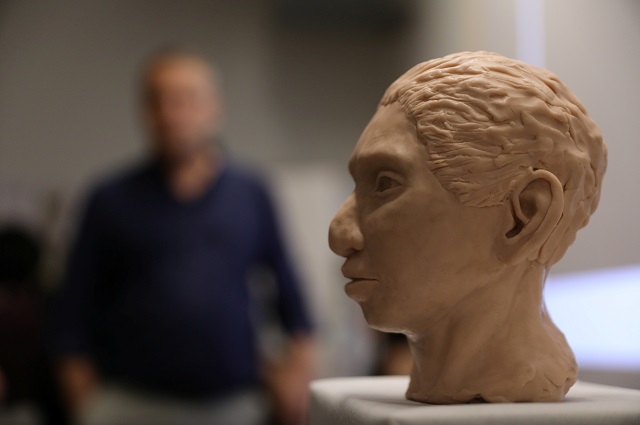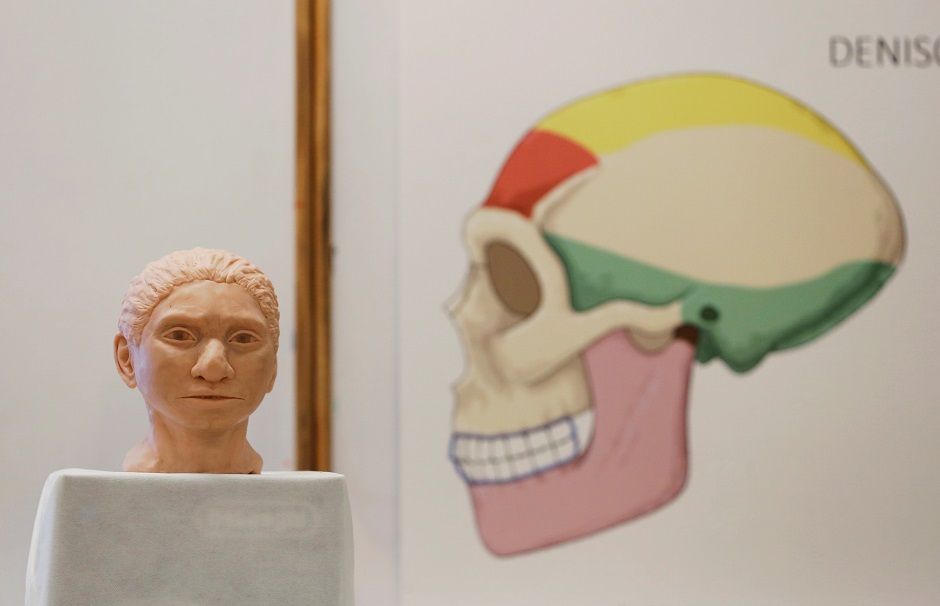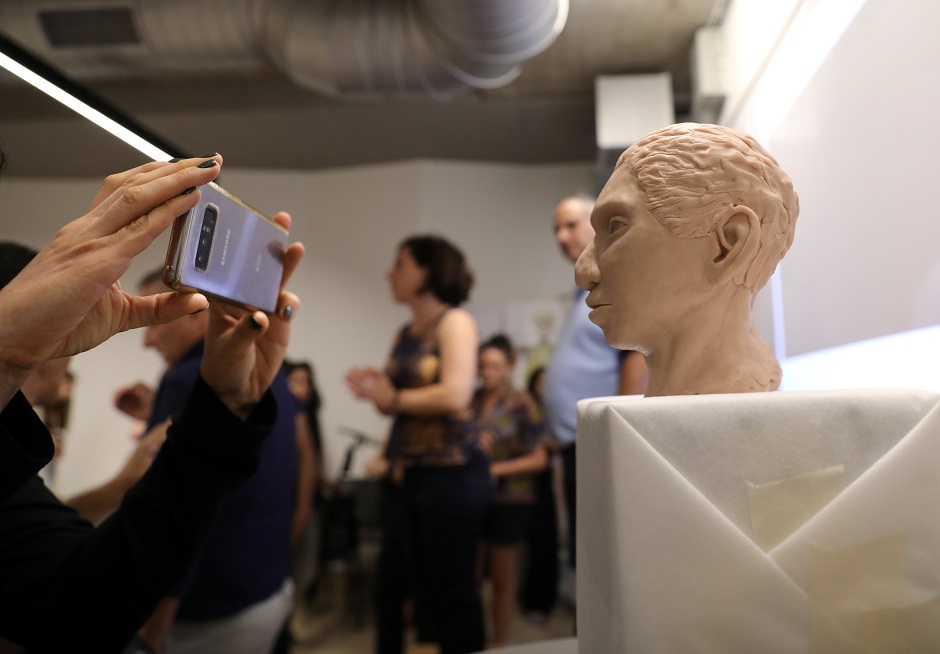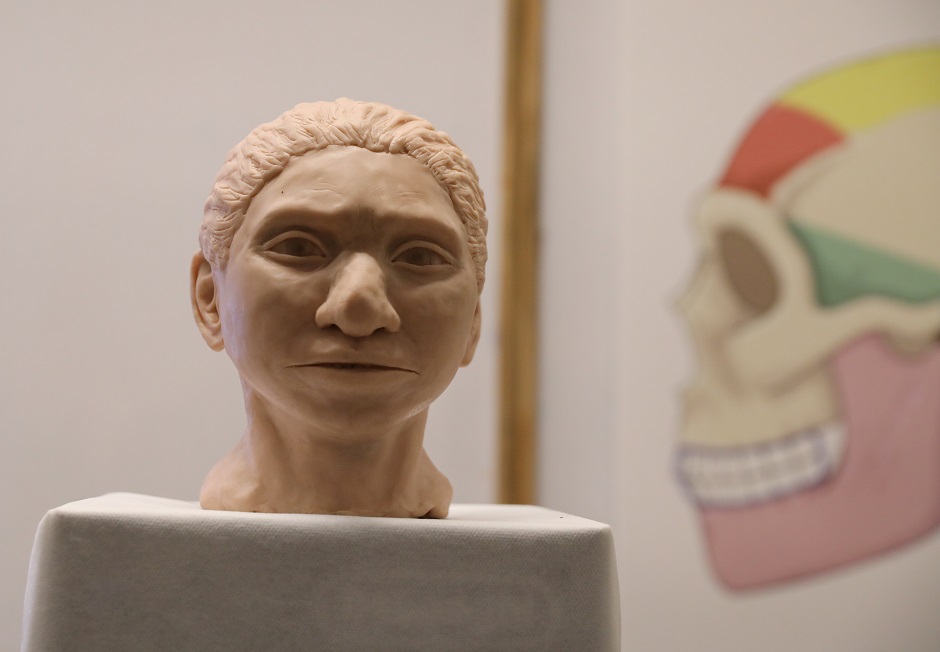
Little is known about the Denisovans, who were ancient relatives of the more familiar Neanderthals and our own species. Their existence was only recently discovered and has fascinated scientists worldwide.
Evidence was first uncovered in 2008 in a cave in Siberia, and today it includes only three teeth, a pinky bone and a lower jaw, said Hebrew University genetics professor Liran Carmel.
 The artistic rendering of the head and face of a 13-year-old girl from the the prehistoric human species, Denisovan, based on technology developed by Hebrew University professor Liran Carmel and his team. PHOTO: REUTERS
The artistic rendering of the head and face of a 13-year-old girl from the the prehistoric human species, Denisovan, based on technology developed by Hebrew University professor Liran Carmel and his team. PHOTO: REUTERSIt sounds like science fiction, but Carmel said that was enough to create a depiction of a full Denisovan skeleton.
“This is the first time that we provide a detailed anatomical reconstruction showing us what these humans looked like,” he said.
Prehistoric settlement in Turkey bears telltale signs of modern woes
It turns out, Carmel said, “we are all very similar.”
His team developed a technology to decipher the ancient DNA and, more importantly, its gene activity. Gene activity, for example, differentiates between a frog and tadpole, even though their DNA is identical, Carmel said.
 PHOTO: REUTERS
PHOTO: REUTERSDNA could indicate the Denisovan’s dark skin, eyes and hair, Carmel said, but by mapping gene activity patterns, they could infer how the species stood out anatomically from modern humans or Neanderthals. They identified 56 traits, most in the skull, that differed.
This helped them produce a rendering - claiming 85 per cent accuracy - of a Denisovan skeleton that at first glance looks like it could be from a modern human, though differences are obvious on closer inspection.
Rare 3.8-million-year-old skull yields new clues on how humans evolved
There were similarities to Neanderthals - a sloping forehead, long face and large pelvis - but the Denisovans were also unique in their very wide skull and large dental arch.
 PHOTO: REUTERS
PHOTO: REUTERSThe skeletal reconstruction, along with an artist’s rendering of the 13-year-old girl’s head and face, were published in the journal Cell.
The team repeated the process as a test with Neanderthals and chimpanzees, whose anatomies are known, and found the reconstruction to be 85 per cent accurate. The discovery of more Denisovan DNA would further improve the rendering.
 Hebrew University professor Liran Carmel, gestures next to the artistic rendering of the head and face of the skeleton. PHOTO: REUTERS
Hebrew University professor Liran Carmel, gestures next to the artistic rendering of the head and face of the skeleton. PHOTO: REUTERSA woman takes a photograph of the artistic rendering of the head and face of a 13-year-old girl from the the prehistoric human species,
Some far-flung modern Asian populations possess small but significant amounts of DNA derived from Denisovans, suggesting they had a broad geographical presence.
Research suggests that Denisovan DNA may have contributed to modern Tibetans’ ability to live in high altitudes and the Inuits’ ability to withstand freezing temperatures.











































COMMENTS
Comments are moderated and generally will be posted if they are on-topic and not abusive.
For more information, please see our Comments FAQ